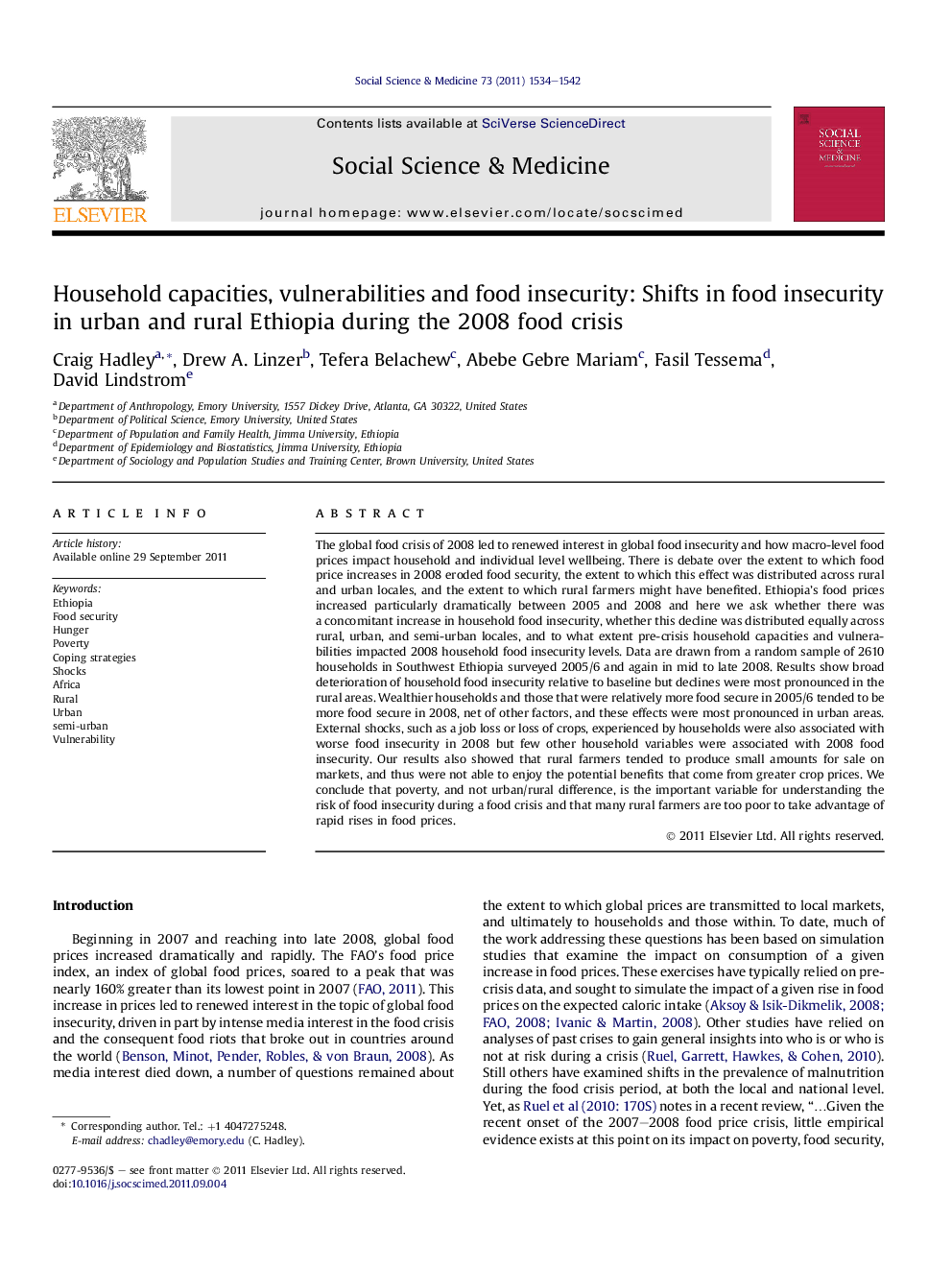| کد مقاله | کد نشریه | سال انتشار | مقاله انگلیسی | نسخه تمام متن |
|---|---|---|---|---|
| 952489 | 927517 | 2011 | 9 صفحه PDF | دانلود رایگان |

The global food crisis of 2008 led to renewed interest in global food insecurity and how macro-level food prices impact household and individual level wellbeing. There is debate over the extent to which food price increases in 2008 eroded food security, the extent to which this effect was distributed across rural and urban locales, and the extent to which rural farmers might have benefited. Ethiopia’s food prices increased particularly dramatically between 2005 and 2008 and here we ask whether there was a concomitant increase in household food insecurity, whether this decline was distributed equally across rural, urban, and semi-urban locales, and to what extent pre-crisis household capacities and vulnerabilities impacted 2008 household food insecurity levels. Data are drawn from a random sample of 2610 households in Southwest Ethiopia surveyed 2005/6 and again in mid to late 2008. Results show broad deterioration of household food insecurity relative to baseline but declines were most pronounced in the rural areas. Wealthier households and those that were relatively more food secure in 2005/6 tended to be more food secure in 2008, net of other factors, and these effects were most pronounced in urban areas. External shocks, such as a job loss or loss of crops, experienced by households were also associated with worse food insecurity in 2008 but few other household variables were associated with 2008 food insecurity. Our results also showed that rural farmers tended to produce small amounts for sale on markets, and thus were not able to enjoy the potential benefits that come from greater crop prices. We conclude that poverty, and not urban/rural difference, is the important variable for understanding the risk of food insecurity during a food crisis and that many rural farmers are too poor to take advantage of rapid rises in food prices.
► Our results show a marked increase in household food insecurity in rural Ethiopia between 2005 and 2008.
► This increase was most pronounced among rural dwellers and the poor, two categories with considerable overlap.
► Household wealth was among the few buffers.
► Rural farmers did not appear able to capitalize on the higher food prices.
Journal: Social Science & Medicine - Volume 73, Issue 10, November 2011, Pages 1534–1542